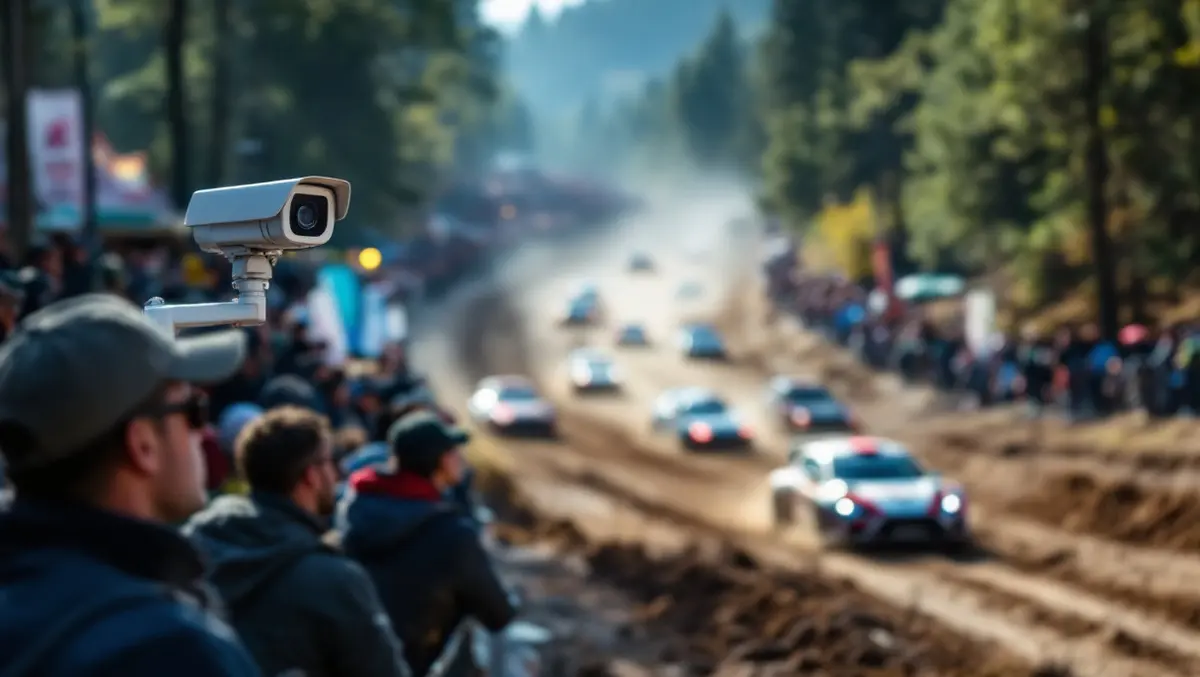
AI safety camera aims to improve protection at rally events
The Fédération Internationale de l'Automobile (FIA) has introduced an Artificial Intelligence Safety Camera (AISC) designed to improve real-time spectator safety at rally events.
The new system had its first deployment at the Rally Sierra Morena, the opening round of the 2025 FIA European Rally Championship. The AISC marks a change in how rallying addresses the challenge of monitoring spectators along extensive, often remote, stage routes that span tens of kilometres. It is the outcome of a collaboration between the FIA and Croatian start-up Calirad, bringing AI-powered technology to rally cars competing in the event.
The AISC consists of a GPU-enabled camera unit, connected to a processing device capable of conducting on-board image analysis. The camera is mounted on competing cars, utilising AI-based human detection to monitor the stage for spectators, including those who move into unsafe positions as the rally progresses.
Once a competing car passes through a stage, the system records the locations of spectators and evaluates the data instantly. Alerts with images of potentially hazardous spectator positions are transmitted to a web-based interface accessible by event officials. This real-time data distribution allows for rapid safety interventions before the arrival of subsequent competitors.
The technology is designed to support the Chief Safety Officer, who receives flagged scenes through the interface and can ascertain the exact location of individuals in risk zones. The officer can then address identified risks using an advanced management interface. This process aims to improve upon traditional, manually based monitoring methods, which are limited by the sheer scale and remoteness of typical rally stages.
While such systems have historically been focused at international championships with significant resources and broadcast coverage, the FIA identifies the greatest future impact of the AISC at regional and national rally events, where organiser infrastructure is generally less extensive.
"Spectator safety is fundamental to rallying. With stages often taking place in remote, unpredictable environments, ensuring that fans are in safe locations is both a challenge and a responsibility. The introduction of the AI Safety Camera allows us to take a huge leap forward in how we monitor and manage risk during events," FIA Safety Director, Nuno Costa, said.
"This technology isn't about restricting fans, it's about protecting them. It allows organisers and officials to respond rapidly and ultimately allows them to prevent accidents before they happen." Costa added.
FIA Road Sport Director Emilia Abel said that they have very high levels of sophistication and systems at the World Championship level, and they need to utilise that safety. Safety, particularly for spectators, is something they continue to develop at the grassroots, national, and regional levels as well.
"Rally is perhaps the most spectacular form of motor sport, and there is nothing quite like being on a stage watching rally cars in action. We want to make sure spectators can enjoy the sport safely, and the AI Safety Camera can make a real difference by giving organisers a new tool that provides real-time safety information on their events." Abel said.
"Our message is clearly that this system is here to protect firstly the spectators, and also the sport itself, as we want to see rallying continue to grow and thrive as we move into an exciting new era in the coming years."
The AISC system was developed with the intention of being low cost and scalable, with future availability anticipated for a wider range of rallying events, including those at grassroots level.
Following the evaluation of its performance at the 2025 FIA European Rally Championship, the FIA plans to prioritise the deployment of this system at regional and national championships.


